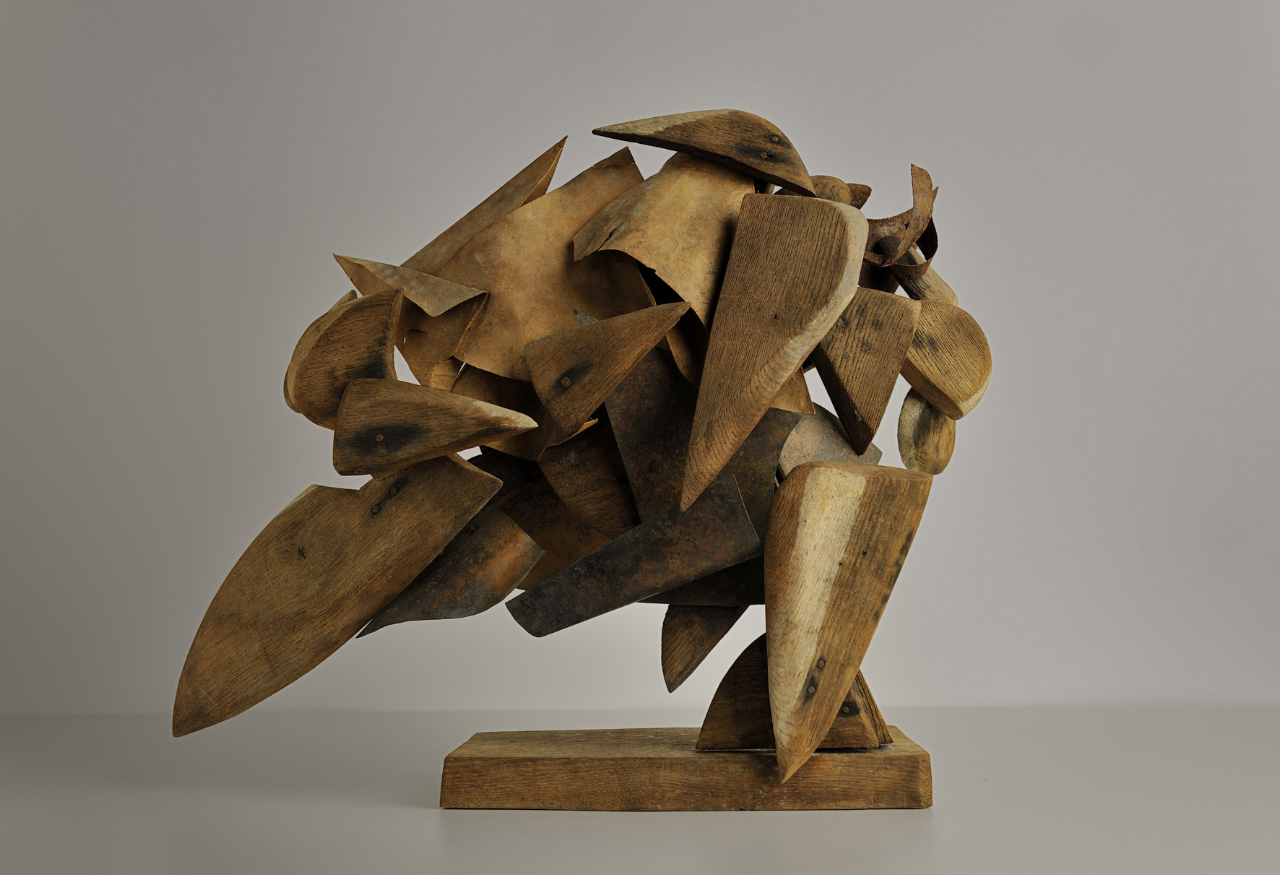Favorite Artwork Fact File
Umberto Boccioni. Dinamismo di un cavallo in corsa+case (Dynamism of a Speeding Horse + Houses) (1914-15). Wood, cardboard, metal, and paint; 112.9 x 115 cm. The Peggy Guggenheim Collection Venice.
In the spring of 1996, the Peggy Guggenheim Collection in Venice reopened after a period of renovation with an exhibition dedicated to the last sculpture of the Futurist artist and philosopher Umberto Boccioni, Dinamismo di un cavallo in corsa+case(1914-15). The small object is the only surviving sculpture made with the different materials that are listed as a means of the achieving the plasticity of emotion described in Boccioni’s 1912 Manifesto della scultura futurista: “Even twenty different materials …in a single work … glass, wood, cardboard, iron, cement, horsehair, leather, cloth, electric light, etc.“
Boccioni’s paintings and drawings on the theme of the horse without a knight document the complex relationship between Futurism, the equestrian public monument in Italy, and the symbol of the animal as an icon who traversed classic and modern.
However, the painstaking scholarship undertaken by Angelica Zander Rudenstine concerning the provenance and condition of artwork in the Peggy Guggenheim trove revealed some startling information. For one thing, the number of damaged Futurist (and other) masterpieces was devastating, harmed by exposure to light, too-frequent lending to other institutions, careless storage, and lack of proper preservation. Other transgressions included restorations that failed to take into consideration the minutiae of the maker’s materials and intentions. As it turned out, Rudenstine discovered, only a small portion of Dinamismowas genuine: Nearly half of the sculpture was made in the second half of the 20thCentury and had little to do with Boccioni’s original creation.
Then, in 2012, a message came from a century earlier. Working from a description in the catalogue of the famous Milanese Palazzo Cova exhibition of 1916-17, sculptor Massimo Carpi used Boccioni’s notes about the lost Costruzione dinamica di un galoppo – like Dinamismofabricated from “wood, tin, copper, and cardboard”– to make a maquette of the sculpture. Soon after, a small original work appeared. It was supposed to have been found in a trunk in Rome, where it had been hidden from the early 20th Century. Examining Costruzione gives much insight into how Dinamismomay once have appeared.
The conical, concave or triangular shapes intertwine, overlap, and suspend one another in the moving horse who does not seem to touch earth. Various points of view testify to the complementary assemblage of shapes and materials suggesting moving and tense musculature, freed from centrifugal force and expressing compositional syntax that is still new and exciting.
Reference: Christopher Masters. “Boccioni, Umberto.” The Oxford Companion to Western Art. Ed. Hugh Brigstocke. Oxford art Online. Oxford University Press.
Dinamismo di un cavallo in corsa+case(1914-15). The Peggy Guggenheim Collection Venice.
Dinamismo di un cavallo in corsa+case. The Peggy Guggenheim Collection Venice. Photo: Arno Hammacher (1965).
Costruzione dinamica di un galoppo, 1914-15. Photo: Storia dell’ arte.
Further Reading: Angelica Zander Rudenstine. Peggy Guggenheim Collection, Venice. New York: Harry N. abrams and The Solomon R. Guggenheim Foundation, 1985.
Umberto Boccioni and Maria Elena Versari. Futurist Painting Sculpture (Plastic Dynamism). Los Angeles: Getty Research Institute, 2016.


